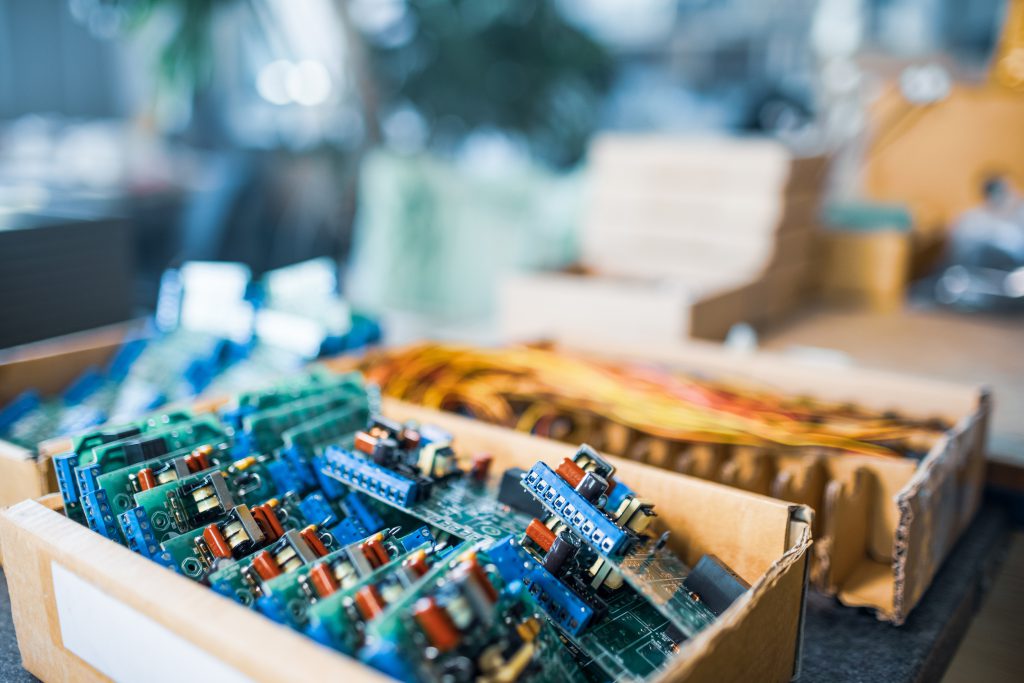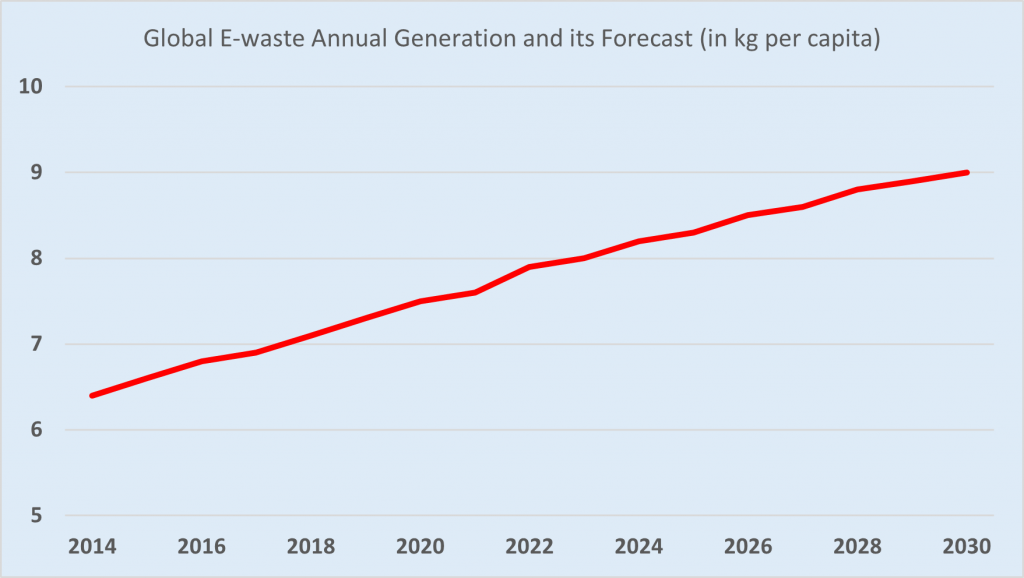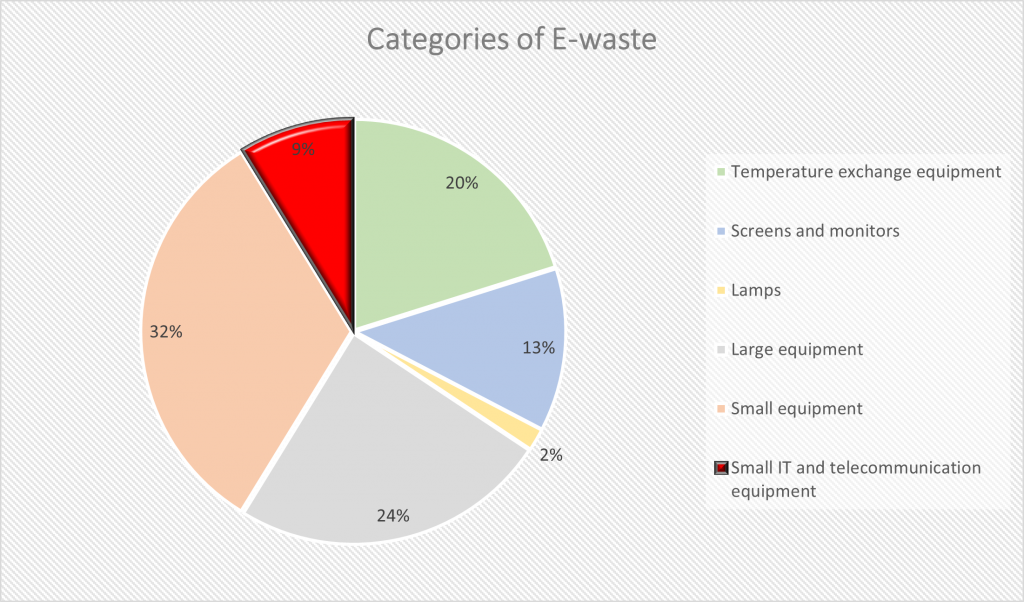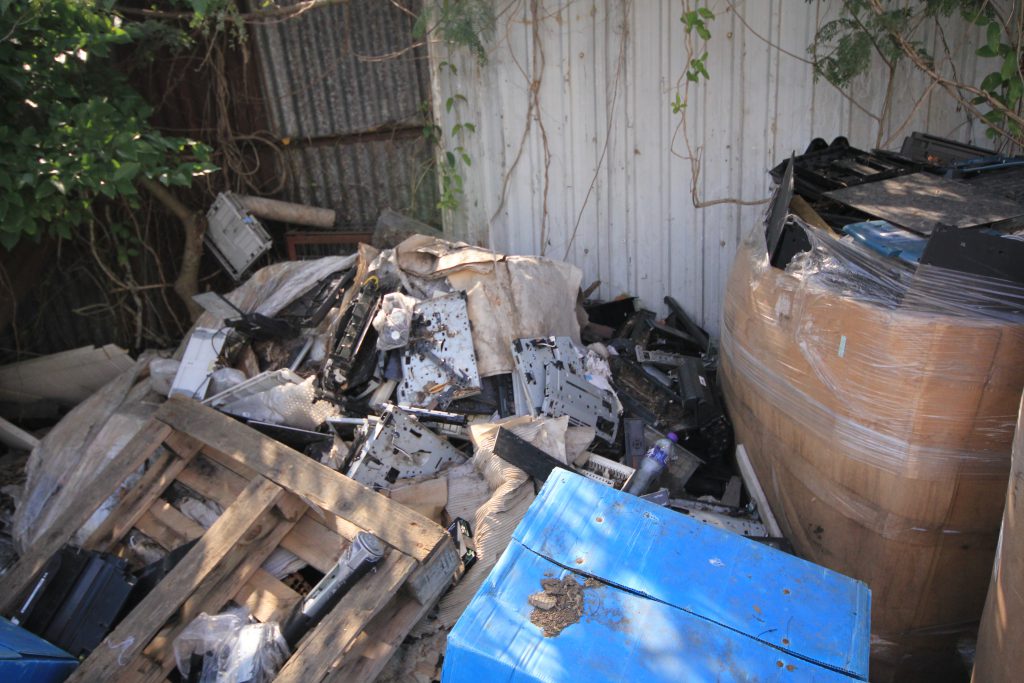E-Waste Facts
E-waste in a Nutshell
E-waste refers to electronic and electrical waste such as your smartphone, computer, printer, fridge, or toaster after you throw them out. According to a report released by the Platform for Accelerating the Circular Economy (PACE) and the UN E-waste Coalition, 50 million tonnes of e-waste, which is equivalent to 4500 Eiffel towers, are produced each year; and sadly, 80% of this total amount is discarded in landfills, burned or illegally traded and treated in a sub-standard way every year. Unless we act now, the volume of e-waste is estimated to reach 120 million tonnes annually by 2050, posing threats to both our environment and health if being mishandled. E-waste can be toxic and not biodegradable.



The globe is producing more and more e-waste each year, and the trend is estimated to continue.
There are different types of e-waste, and the amount of connected devices like smartphones and laptops are high despite their small size.

Planned Obsolescence

Planned obsolescence is a strategy of deliberately ensuring that the current version of a given product will become out of date or useless within a known time period. It is one of the culprits of the overwhelming e-waste production. For instance, Apple was accused of slowing down old iPhones’ operation system to force people to buy their new models. While those gadgets could have lived longer, these kinds of tactics make customers buy new devices and dump the old ones, and thus produce extra e-waste.
Governmental Efforts

Hong Kong, once a haven for global trade in e-waste, generates about 70000 tonnes of Waste Electrical and Electronic Equipment (WEEE) annually and would export them in the past to reuse and recover valuable materials. Yet, this reliance on export in handling locally generated WEEE was said to be unsustainable “in the long run because demand for second-hand products in markets outside Hong Kong will decline over time with progessive economic development and tightening of import control over WEEE in other jurisdictions”.
Abandoned e-waste dumpsite commonly seen in Hong Kong

“Waste Disposal Ordinance” and “Producer Responsibility Scheme on Waste Electrical and Electronic Equipment (WPRS)” are often invoked to relieve the e-waste problems in the city. Under the Waste Disposal Ordinance, production, storage, collection and disposal of e-waste are under rigorous scrutiny; whereas under WPRS, suppliers of Regulated Electrical Equipment (REE), including those of mobile phones and tablets, have to pay a recycling levy, ranging from HK$ 15 to HK$ 165 for each REE, for free removal service that transport obsolete REE to a WEEE treatment and recycling facility in Tuen Mun.
The Environmental Protection Department has also established Community Green Stations since 2015 to collect disposed electrical devices, such as phones and rechargeable batteries, which will then be sent to suitable recyclers for subsequent processing.
Our Visions

Without disregarding governmental efforts, we believe that a “repair and reuse” approach could be an alternative, if not a substitute, for the “recycle” approach for two reasons.
First, unlike recycling that will eventually produce a new product from extracted raw materials, the “repair and reuse” approach mitigates the e-waste problem simply by extending the lifecycle of an electronic device, using less resources and energy. Moreover, the “repair and reuse” approach could become prominent through a slight change in our mindset, and all of us can do that: instead of desiring the latest and newest gadgets, love your old ones and give them a longer life!
OpenRepair HK provides a convenient, reliable and cost-saving platform to practice the “repair and reuse” approach, first at the campus and then in the city, by connecting potential student customers and individual repairers. We hope one day, when the approach gets popular, not only can people enjoy quality repair services and repairers have stable income, but also most importantly, our environment and people will no longer suffer from the contamination of e-waste.
